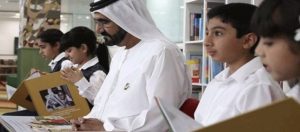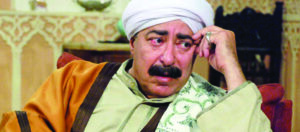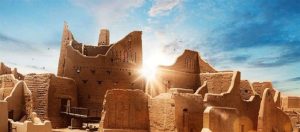Under the patronage of His Highness Sheikh Mohamed bin Zayed Al Nahyan, Crown Prince of Abu Dhabi and Deputy Supreme Commander of the UAE Armed Forces, Sheikh Hamed bin Zayed Al Nahyan, Chief of the Abu Dhabi Crown Prince’s Court, and His Royal Highness Prince Sultan bin Salman bin Abdul Aziz Al Saud, President of the Saudi Commission for Tourism and National Heritage (SCTH), on Wednesday opened “Roads of Arabia: Archaeological Treasures of Saudi Arabia”, the second international exhibition of the museum’s cultural season.
The exhibition explores the rich history of the Arabian Peninsula through archaeological and cultural artefacts, including a selection of rare pieces from the United Arab Emirates.
Attending the event were Sheikh Abdullah bin Zayed Al Nahyan, Minister of Foreign Affairs and International Cooperation; Sheikh Diab bin Mohamed bin Zayed Al Nahyan, Chairman of Abu Dhabi Department of Transport; Sheikh Sultan bin Tahnoon Al Nahyan, Member of the Executive Council; Sheikh Shakhbout bin Nahyan Al Nahyan, UAE Ambassador to Saudi Arabia; Sheikh Zayed bin Sultan bin Khalifa Al Nahyan; and Noura bint Mohammed Al Kaabi, Minister of Culture and Knowledge Development, along with a number of dignitaries and senior officials.
Sheikh Hamed hailed the organisation in the UAE of the event which narrates the historical and human civilisation of the Kingdom of Saudi Arabia and the Arabian Peninsula in its entirety.
Sheikh Hamed noted that the exhibition represents an important opportunity to learn about the civilisation of Saudi Arabia and the Arabian Peninsula and its rich cultural heritage and historical and humanitarian elements throughout the ages.
Sheikh Hamed commended the role of the Custodian of the Two Holy Mosques King Salman bin Abdulaziz Al Saud of Saudi Arabia and the importance he is attaching to the historical and cultural heritage of the Kingdom as well as his keenness to maintaining channels of fruitful communications between various cultures.
“Roads of Arabia: Archaeological Treasures of Saudi Arabia” explores five chapters in the history of the Arabian Peninsula, spanning early prehistoric settlements; maritime exploration; caravan trading routes that linked the region with Asia, Mesopotamia and the Mediterranean; routes of holy pilgrimage emerging in the 7th century CE; and the social and economic developments between the 14th and 16th centuries that set the stage for the modern day region.
Fourteen acclaimed editions of the show have toured throughout Europe, the USA and Asia, before now coming back to the region at Louvre Abu Dhabi, where it is enriched by selected pieces from the UAE. The exhibition was conceived through cooperation between SCTH and the Musée du Louvre in Paris, where it was first presented in 2010. It is one of the most renowned Saudi exhibitions internationally, introducing Arabia’s cultural and historical heritage to over five million visitors worldwide.
On this occasion, His Royal Highness Prince Sultan bin Salman bin Abdul Aziz Al Saud, President of the Saudi Commission for Tourism and National Heritage, expressed his happiness at visiting the UAE during the Year of Zayed, saying the showcase contributes to achieving the ambitions of the UAE Founder and other leaders of the region for ensuring integration among the Arabian Peninsula’s peoples.
The expanded exhibition to be displayed at Louvre Abu Dhabi is co-curated by Jamal S. Omar, Vice President of Antiquities and Museums Department at STCH, Dr. Souraya Noujaim, Scientific, Curatorial and Collection Management Director at Louvre Abu Dhabi, and Noëmi Daucé, Chief Curator for Archaeology at Louvre Abu Dhabi.
Sheikh Hamed, Sheikh Abdullah, Sheikh Diab, Prince Sultan and other attending sheikhs and dignitaries made a tour of the exhibition which showcased important archaeological pieces from the United Arab Emirates, including a pearl found in Umm Al Qaiwain dating from 5500-5300 BCE (loaned by Umm Al Qaiwain Museum); a stone decorated with a wild camel from the late 3rd millennium BCE (loaned by Al Ain Museum), as well as objects from Julfar (loaned by the National Museum of Ras Al Khaimah).
As part of the programme, Emirati artist Hind Mezaina has curated a series of film screenings, taking place each Saturday from 5 – 26 January, featuring documentaries and films relating to the Arabian world, past and present.
www.sharjah24.ae




